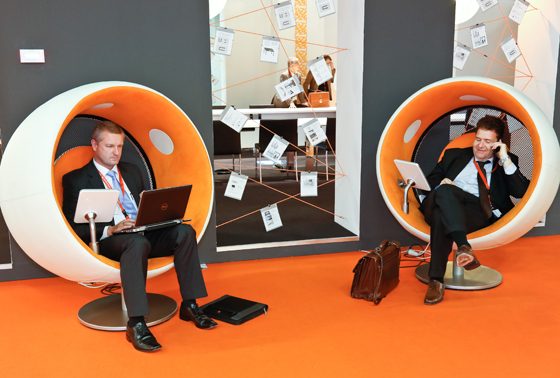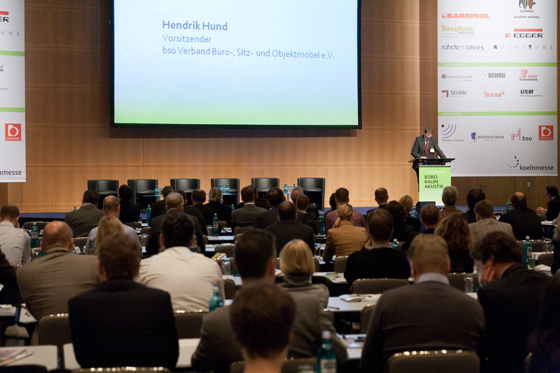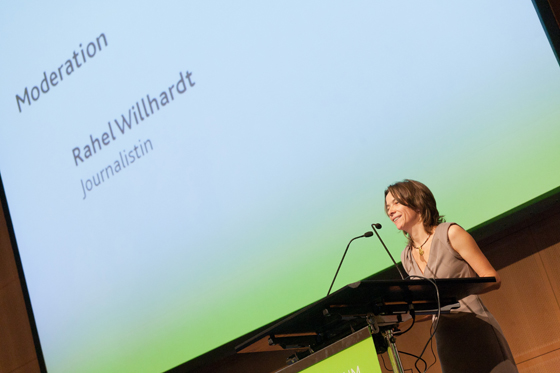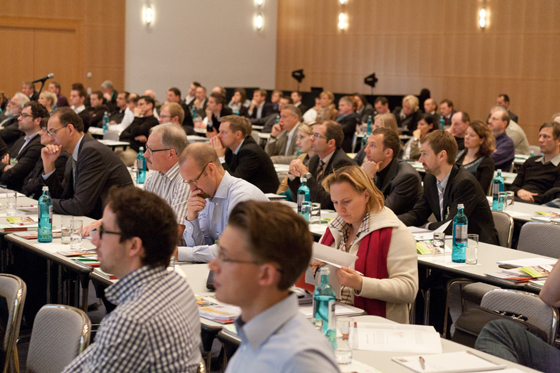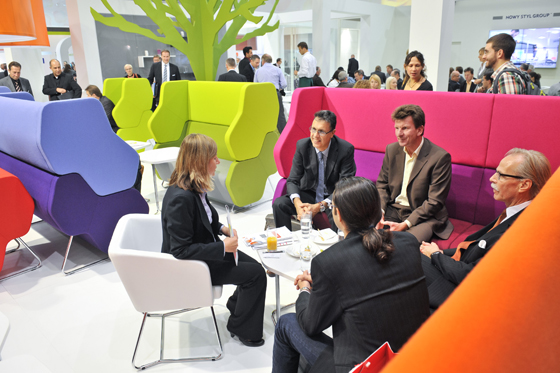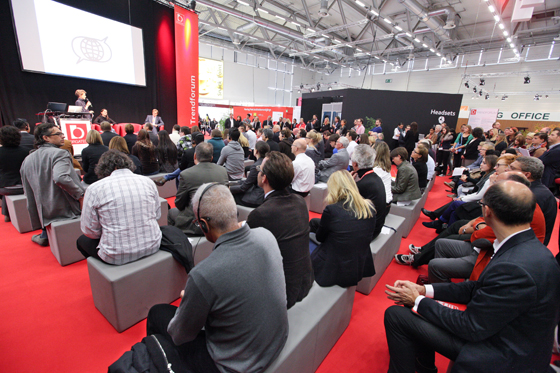3 Generations in One Office: 'Büro. Raum. Trends.' symposium in Cologne
Texto por Simon Keane-Cowell
Zürich, Suiza
04.09.13
Major demographic shifts, including an ageing population and the increase in a younger workforce, present serious challenges for the office landscape. What do the different generations who come together to work want and need from their office environment? How can they collaborate better? And what role does design play in all of this? The 'Büro. Raum. Trends.' symposium at the koelnmesse in Cologne on 17 October will shed some light.
While we choose, both on a conscious and unconscious level, to participate in social groups and tribes that speak to and about our individual identities, the world of work is probably the one major arena in our lives where we spend a significant amount of time with people who are, to a large extent, very different from us.
Often, one of the major points of difference is age.
Functioning as a thematic lead into next year’s edition of – the leading international fair for design for the office and facility – the 'Büro. Raum. Trends.' symposium, which takes place on 17 October at the koelmesse (Cologne fairgrounds), tackles generational difference within the workplace head on.
Bringing together some of the leading thinkers and practitioners from the fields of business and design, this one-day ideas exchange, chaired by author, journalist and presenter Dr Hajo Schumacher, maps out what the challenges are for younger and older staffers who inhabit the same work environments – not only in terms of the way these physical spaces are shaped, but also with regard to communication, self-perception and identity – and offers concrete examples of office projects that have addressed these issues.
Demographics are constantly in flux, but increased life expectancy in the West over the last couple of decades is without a doubt the single most influencing factor when it comes to human resources. As retirement ages are being pushed back and pension provisions shrink, more of the Baby Boomer generation are required to work much longer. This, combined with an expanding younger workforce (dubbed by experts as the Generation Y) and the continued presence of the capable and industrious tranche of workers born in the 1960s and 70s (the classic Generation X), makes for a rather crowded work landscape.
Each demographic comes with its particular set of expectations, values, and competences. The key challenge is how to create work environments that harness difference, yet foster dialogue, understanding and, of course, support effective working between these chronologically diverse groups. Organisational hierarchy, office layouts and the use of technology all have differing levels of importance among these three constituents and have to be negotiated properly in any office that is seeking to take multi-generational working seriously.
Getting to grips with these thematics and problematics are a panel of expert speakers. The renowned Dutch trend-watcher and cultural sociologist Professor Dr Carl C Rohde will discuss a number of major trends, as he sees them, including workspaces that directly stimulate creativity and the rise of the urban nomad. Journalist and publicist Dr Winfried Kösters, meanwhile, poses the questions, ‘What will the office of the future look like?’ and ‘Who is going to be sitting in the office of the future?’, examining the effect that an ageing population and an increase in multiculturalism will have on the world of work.
Christoph Fellinger, Talent Relationship Management at Beiersdorf AG, will discuss in detail what characterises the Baby Boomers, the Generation-Xers and the youngest cohort that is the Generation Y and what they expect from the work environment, while trends expert Birgit Gebhardt will focus on praxis. Her talk will present real-life projects that have successfully delivered new possibilities for each of these three to ditch their prejudices about their differently aged colleagues and to learn from them, replacing conflict with constructive opportunity.
Last but not least, Hendrik Grempe, who is Head of Property at Vodafone Germany, and Mike Herud, MD and partner at SCOPE office for architecture, will present respectively new ways of working and a compelling project case study that responds to the growing need for greater collaboration at work and more effective and faster knowledge-sharing.
‘Human resources’ as a term can sometimes sound a little abstract, turning people into just another form of capital. But what we do know is that a competitive, innovative organisation or company relies on the smarts of its workers and that means creating the best kind of environment to get the best out of them as individuals, whatever their age.
....
Büro. Raum. Trends. 3 Generationen im Office
Symposium
17 October 2013
09.00 to 16.30
Rheinsaal
Congress-Centrum Nord
Koelnmesse
Cologne
Architonic readers get a special discount of €40 when registering (pay €250 instead of €290).
Just enter the code ‘ARCHITONIC’ when registering online.
To register and for more information, visit:
